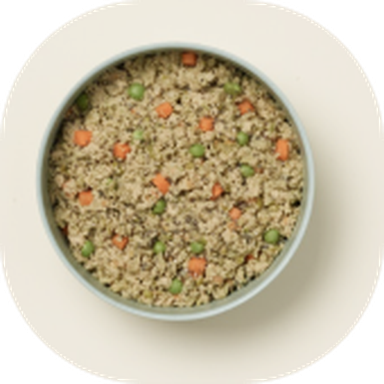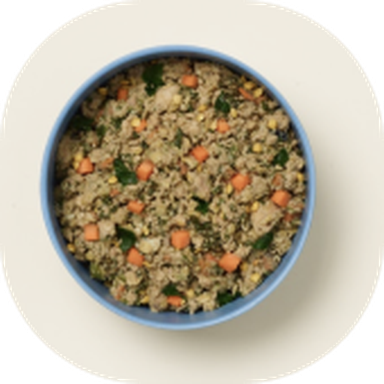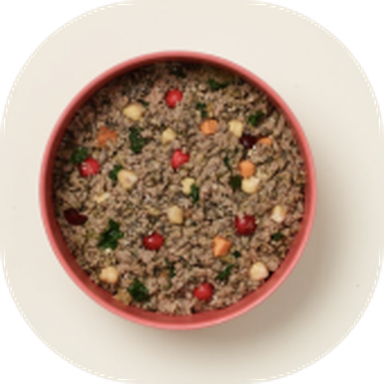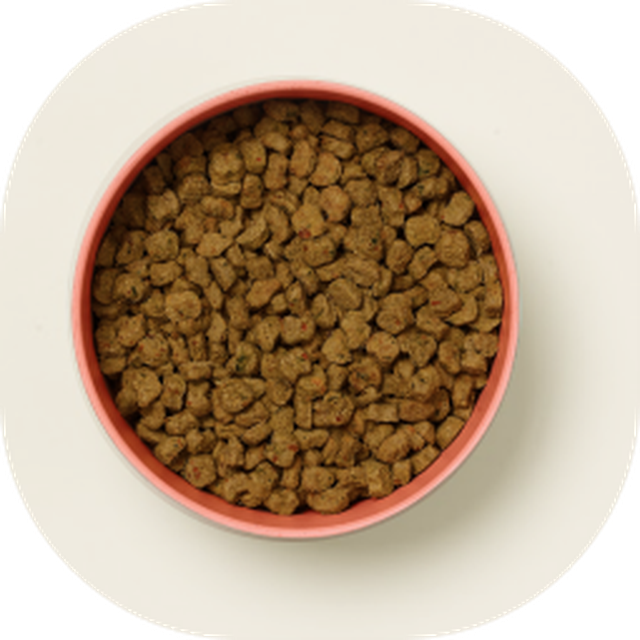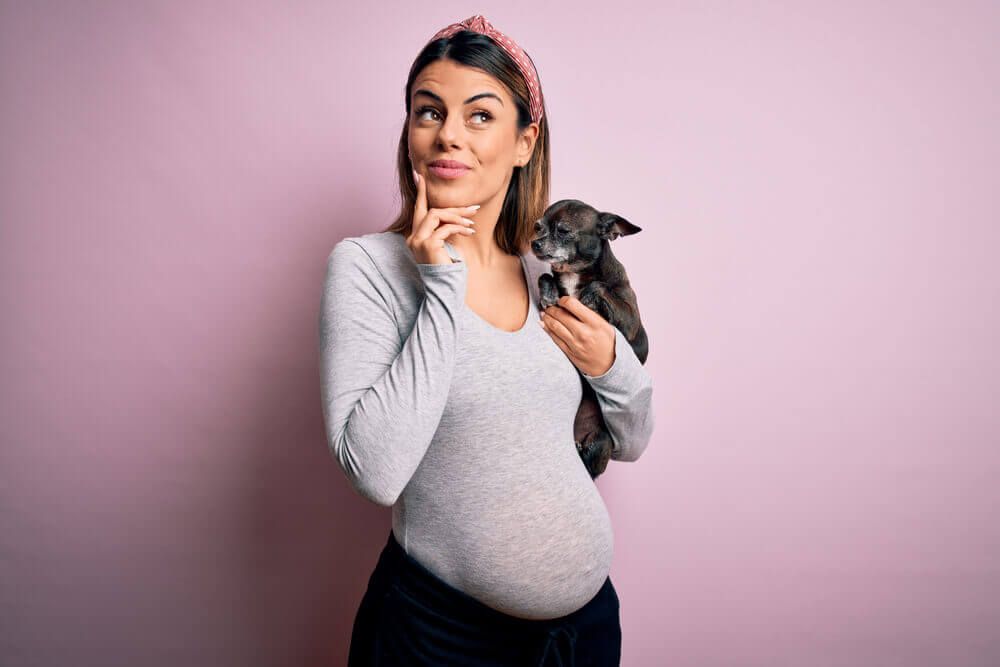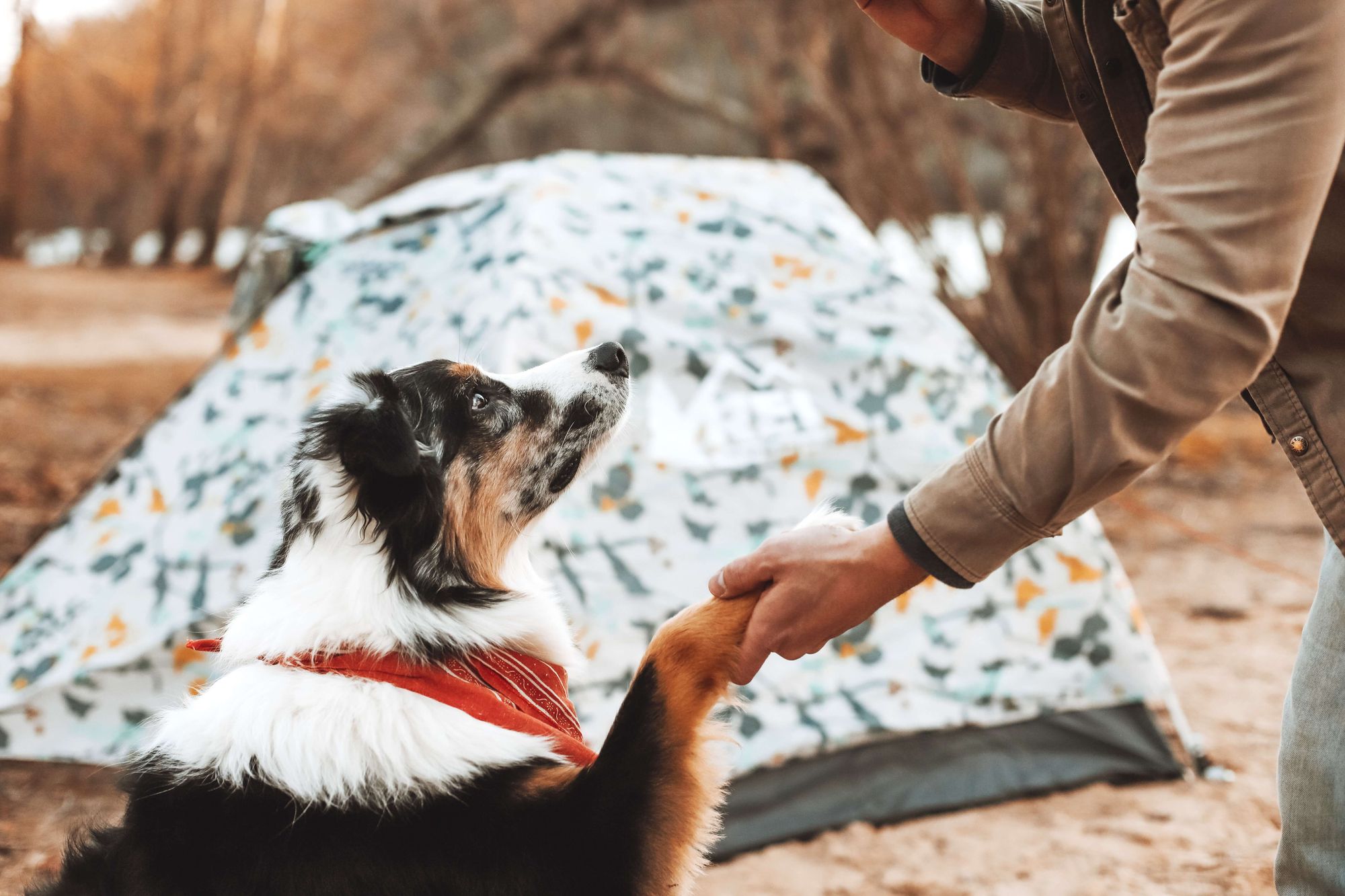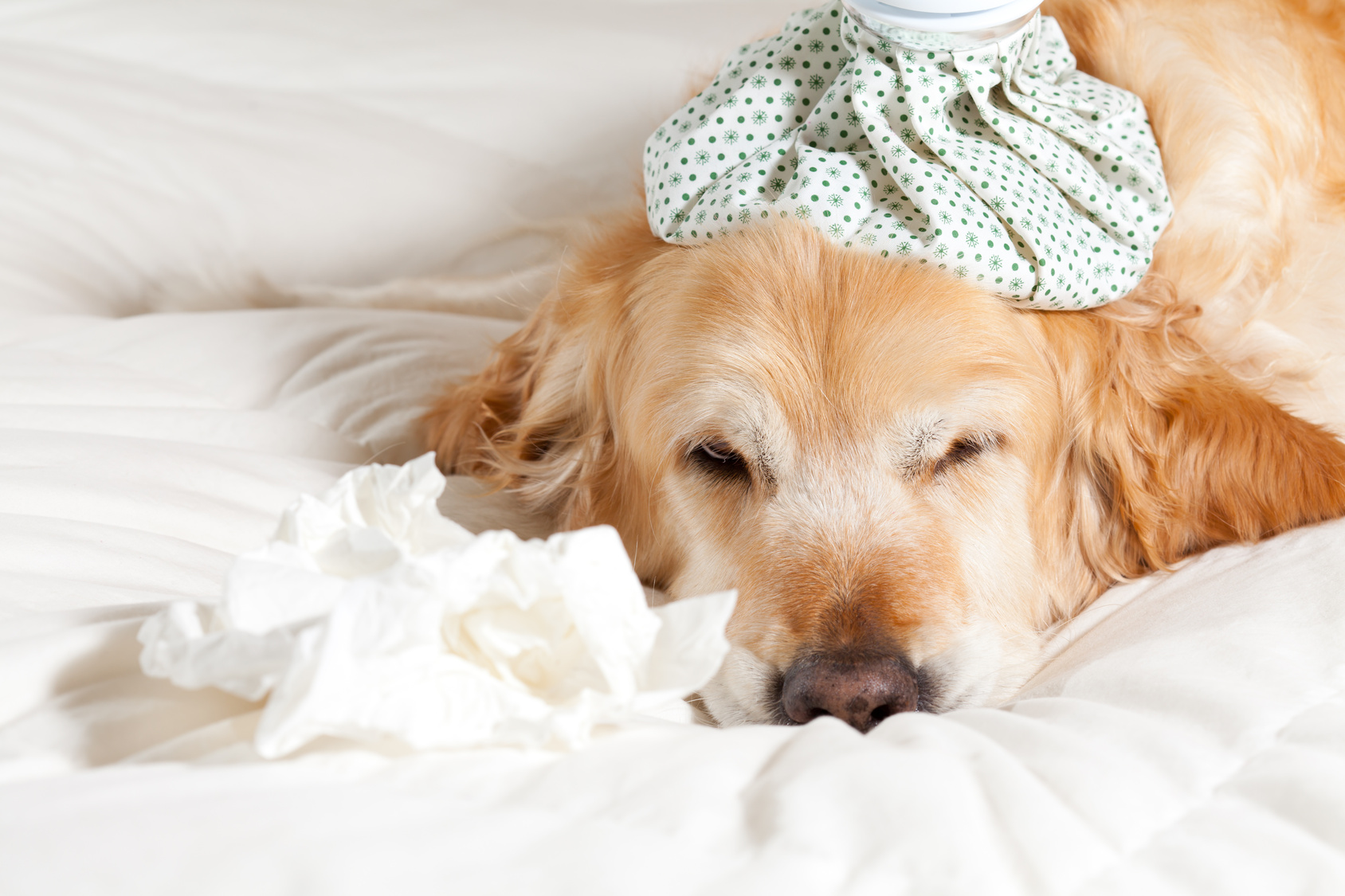Hey Ollie blog readers! We’re offering you an exclusive 60% OFF your starter box! Try now!
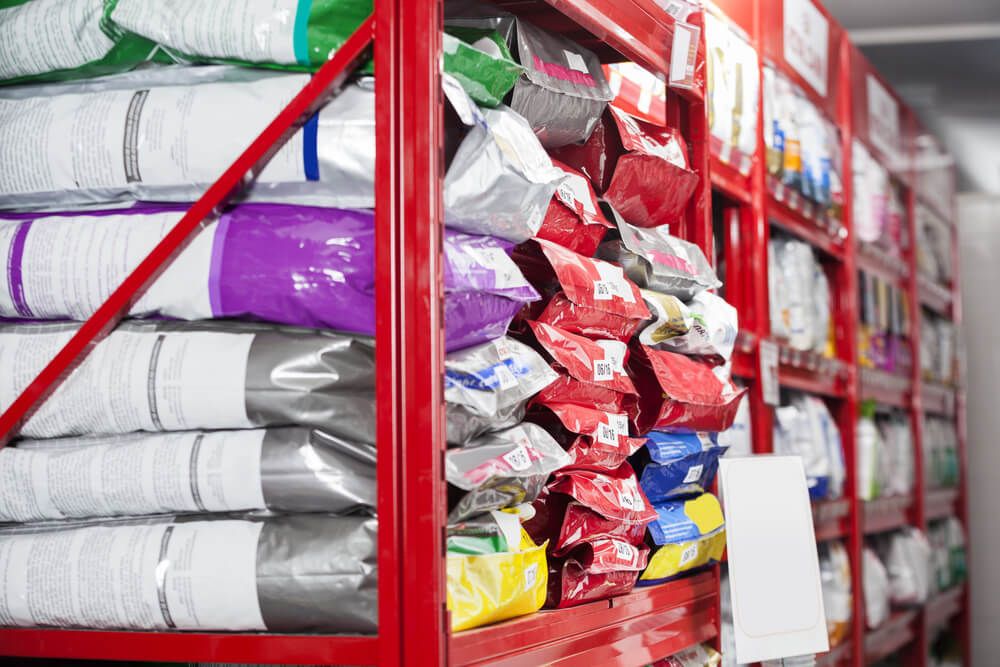
What Is “Human Grade” Dog Food?
“Human grade” is a somewhat vague term that encompasses any food that is safe and edible for people. With this loose definition, it may be easy to reason that any food with this designation is good (or better) for your dog because you could theoretically eat it too. Indeed, while the protein quality and type can vary between dog food brands, many dog owners are comforted to know that the ingredients in their dog’s bowl are good enough for a human’s plate. The 7 Best Dog Food Ingredients to Look forHow Does the AAFCO Define “Human Grade” Dog Food?
The Association of American Feed Control Officials (AAFCO) is a volunteer organization that provides “a venue for feed regulators to explore the problems encountered in administering feed laws; to develop just and equitable standards, definitions and policies for the enforcement of feed laws; and to promote uniformity in laws, regulations and enforcement policies.” AAFCO members are not veterinarians or veterinary nutritionists, but they do help develop standards and definitions for terms used in pet food labeling. When it comes to the legitimacy of “human grade” dog food, AAFCO states: “Extremely few pet food products could be considered officially human edible or ‘human grade.’ A pet food that actually met these standards would be expensive. While pet owners can buy what they feel is best for their pet, they should understand the definitions and the odds.” Ollie Recipe Spotlight: Fresh Lamb with Cranberries AAFCO isn’t the only organization that weighs in on pet food terminology. The U.S. Department of Agriculture (USDA) defines products fit for human consumption as “edible,” and goes on to define edible as “foodstuffs [that] have been processed, inspected, and passed manufacturing regulations (i.e. process control regulations) designed to assure safety for consumption by humans.” In a similar statement AAFCO elaborates on the process that makes a product “human grade.” “For a product to be deemed edible for humans, all ingredients must be human edible and the product must be manufactured, packed, and held in accordance with federal regulations.”What Are the Benefits of “Human Grade” Dog Food?
In addition to helping you feel confident about what’s in your dog’s bowl, feeding your pup a “human grade” dog food comes with outstanding health benefits your dog can’t get from traditional dry dog food. These benefits include:-
- Superior nutrition from whole food ingredients — Because each ingredient in our Ollie recipes is carefully selected for specific nutritional values, your pup is receiving most of their necessary nutrients through fresh whole foods—not synthetic or artificial mix-ins and supplements.
- No artificial ingredients, fillers, or byproducts — “Human grade” foods like Ollie rely on fresh foods—not fake flavors and second-tier ingredients leftover from human food manufacturing—to nourish your pup.
- Minimally processed recipes promote healthy digestion — Less processed foods are often easier to digest and provide higher nutrient absorption. “Human grade” dog food is typically gently cooked to lock in nutrients while protecting against bacterial contamination.
- Exceptional proteins — All meats aren’t created equal, and most “meat” in kibble-based dog food is unfit for human consumption. Meat selections in “human grade” dog food such as Ollie are the same ones you’d serve at home, delivering higher nutritional value, healthy fats, and flavor than traditional dog food proteins.
What to Look for in “Human Grade” Dog Food
When choosing “human grade” dog food, quality and transparency are key. And at Ollie, that is what we strive to give pet parents. Our “human grade” ingredients are carefully sourced for the highest quality and then gently cooked so they are nutritious and safe for your pup. Look for the following criteria to ensure you’re selecting the best “human grade” dog food for your pup.-
- Animal proteins — While dogs can survive without meat protein, vegetarian diets can be difficult to balance. Meats such as chicken, beef, and turkey are highly digestible protein sources, providing key amino acids, essential nutrients, vitamins, and minerals.
- Recognizable ingredients — Look for familiar fruits, vegetables, and grains. If you don’t recognize—or can’t pronounce—multiple items on the ingredient list, keep shopping.
- Short ingredient list — “Human grade” dog foods shouldn’t have a laundry list of ingredients. Look for foods with a relatively short ingredient list filled with items you’d eat yourself.
- AAFCO labeling — Foods that are complete and balanced (i.e., contain all the nutrients your pup needs) will bear a statement explaining that the food meets AAFCO guidelines for all life stages.
- Responsibly manufactured and sourced — Find out where each food is made and how they source their ingredients. Ideally you should look for a food that is domestically sourced, prepared, and packaged. If this information isn’t readily available online, contact the company by phone.
- Appropriate cost — You get what you pay for, and as AAFCO points out, producing “human grade” food is not a cheap process. This is why Ollie fresh recipes cost more per serving than dried commercial kibble. We strive to keep costs as reasonable for pet parents as possible without sacrificing the superior quality of our ingredients.
Can I Mix “Human Grade” with Traditional Dog Food?
“Human grade” dog food, including Ollie recipes, can be easily combined with traditional dry dog food. However, to avoid negating the positive health benefits of feeding “human grade” dog food, we recommend selecting an equally high-quality kibble, such as our baked beef or chicken recipes. Mixing foods can add novelty and excitement to your pup’s bowl, stimulate their appetite, provide a satisfying crunchy texture, and make feeding a “human grade” food more cost-effective. But before you mix things up, remember to introduce new foods gradually over the course of 7 to 10 days to avoid gastrointestinal upset.“Human Grade” Vs Feed Grade: What’s the Difference?
Feed grade dog food is legally defined as, “Material that has been determined to be safe, functional and suitable for its intended use in animal food, is handled and labeled appropriately, and conforms to the Federal Food, Drug and Cosmetic Act unless otherwise expressly permitted by the appropriate state or federal agency.” Most commercial food is considered feed grade. This is because if even one ingredient in the food is not suitable for human consumption, the food can’t be labeled as “human grade.” This means there is quite a bit of variation in the ingredients and quality of feed grade dog foods. Because of the variety of food that is labeled feed grade, it is important to read the ingredient labels very carefully. Look for red flag items such as filler, byproducts or added sugar or dyes—these are non-nutritive ingredients that provide little to no benefit to dogs. 10 Benefits of Fresh Dog Food One of the concerns many pet parents have with feed grade dog food is the type and quality of the meat used in the recipes. While meats like chicken and beef that are not ideal for human consumption can be used to create dog food and reduce the waste from animal farming, the concern is around meat that comes from animals who died from causes other than slaughter. These low-quality meat sources might be cooked under very high heat to kill off any harmful bacteria. The best thing you can do for your dog is research. Look for dog food brands that are transparent about their ingredients, sourcing process, and preparation methods. If your pet ever becomes sick and it is traced back to their food, you can report this to the Food and Drug Administration (FDA).Can Humans Eat Dog Food?
The term “human grade” is only applied to pet food. Food that is intended for human consumption must stay in the supply chain and comply with all FDA requirements for handling, storing and labeling. So, could you eat your dog’s food if you really wanted to? The short answer is no: “human grade” dog food is not formulated for human nutritional requirements or the human palate. So while eating your dog’s food might not make you sick, it’s probably not going to taste all that great. Plus, your dog may not want to share! If you can’t resist sharing a treat—or an entire meal—with your pup, there are other ways to safely do so. Try sharing some lean grilled or roasted proteins such as chicken, turkey, salmon or beef and some plain roasted veggies (i.e., no seasonings or heavy sauces). Your pup can also enjoy things like bone broth, fresh fruit (no grapes or raisins!) and the occasional treat like some whipped cream (or coconut cream). Just remember to adjust your pup’s next meal portion to account for any extra calories!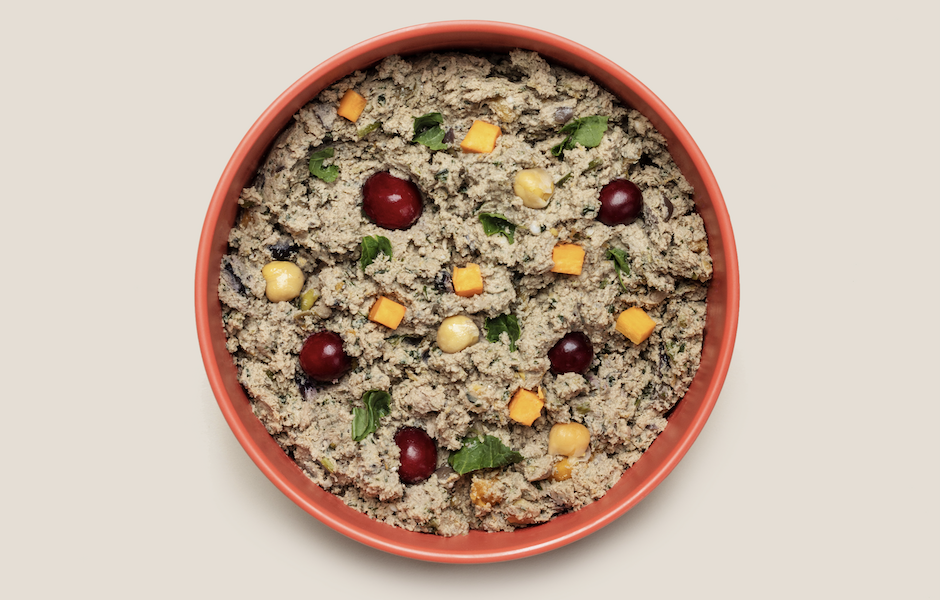

Find Out Which Recipe Plan is Right for Your Dog’s Needs
Get 50% of your first box of Ollie’s fresh delivered meals today!
Take our 5-Minute Quiz!Tagged As:

The nutrition your dog needs,
the food they want.

Enjoying our articles? Subscribe our Newsletters and get new articles directly to your inbox
You might also like
20 June 2024
6 MINS READ
When to Switch Your Puppy to Adult Dog Food
Your puppy’s life is filled with milestones, including the transition from puppy to adult dog food. We explore when to make the switch and provide helpful tips.
by Ollie Pets
11 October 2023
5 MINS READ
Risks of Home Cooking for Your Dog
Although home cooking for your pup sounds like an intuitive and heartwarming way to serve up optimal health through fresh whole ingredients, there are many things you need to know about homemade f…
26 September 2023
7 MINS READ
How to Choose The Perfect Treat for Your Dog
Treats have a place on your dog’s food pyramid, but they should be given with care and consideration.

